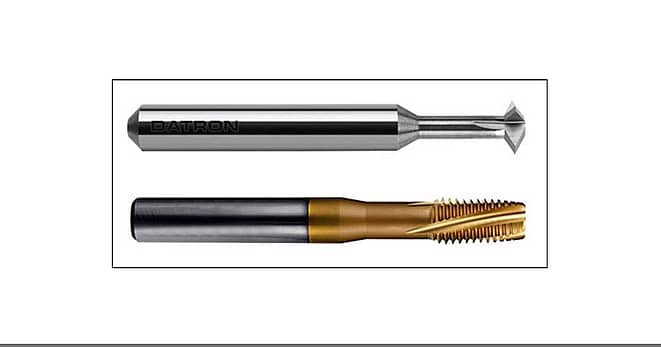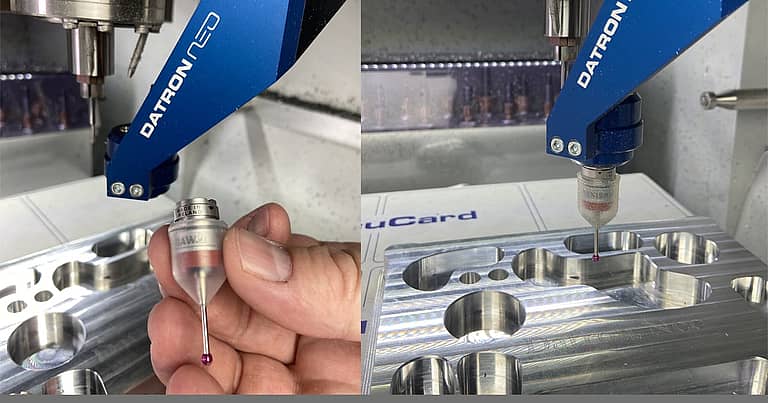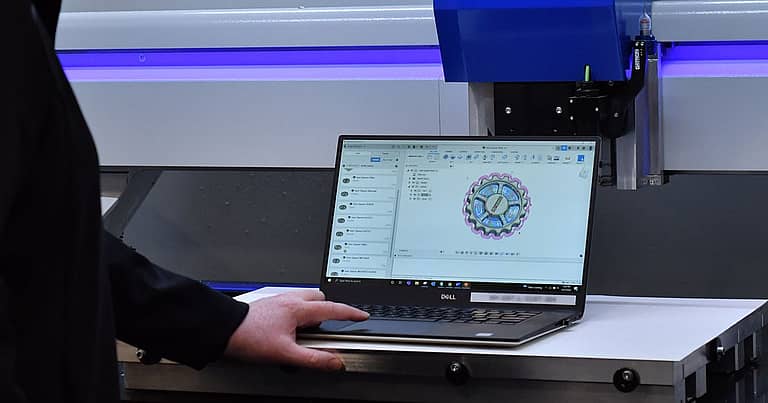Thread Milling vs. Tapping: What’s the Difference?
Thread Milling vs. Tapping, just what are the difference between them and when should each be used? There are some distinct differences between thread milling and tapping. This article explains the advantages and disadvantages of each so that you can make an educated decision about the strategy that will work best for your parts.
Tapping: Advantages and Disadvantages
The greatest advantage of tapping is speed. High-speed tapping centers set up with a rigid tap can thread holes in a fraction of the time it would take to thread mill the same holes. Additionally, tapping can thread deeper holes in harder materials such as steel.
A significant disadvantage of tapping is that a different size tap is required for each size hole that needs to be threaded. This can consume a large number of valuable, but limited positions in the tool magazine. Plus, having to switch tapping tools for all of the various size holes increases the cycle time.
Another disadvantage is that tapping does not allow for adjusting thread fit. Once the hole is tapped, the size and position of the thread is final. Also, rigid taps are used exclusively for interior threading of holes and cannot be used to mill threads onto the outside of a post or screw.
Finally, since the initial portion of a rigid tap is designed to plunge into material rather than making perfect threads, these tools are best for tapping through holes rather than blind tapping, which is threading holes that end within the material. In the case of blind tapping, the deepest threads in the hole are made with the part of the tool that is designed to plunge rather than thread. To complete these last areas as perfect threads, a secondary finishing tool is required and results in longer cycle times.
As general rule of thumb, it is best to employ tapping when you need to make a lot of holes with few variations in size.
Thread Milling: Advantages and Disadvantages
The primary advantage of thread milling is the ability to control the fit. A threaded hole is milled at a high RPM and the tool helixes into a previously-milled hole. So, the machine operator has the ability to adjust thread size using a strategy similar to using an end mill, rather than a drill bit to make a hole. This can be advantageous if there are tight tolerances on the thread sizes or if allowances need to be made for finishing such as painting.
Also, a single tool can be used in thread milling to make a wide range of hole sizes. This reduces both the cost of tooling and the amount of time associated with tool changes. Plus, a thread mill can create interior and exterior threads, right-hand and left-hand threads, as well as very large threaded holes (e.g. pipe threads). In the case of the latter, this eliminates the need to invest in a large rigid tap to thread big holes.
Furthermore, the thread mill gives the user the ability to design custom threads without having to invest in custom taps which can be very expensive and require long lead times. In the machining of very shallow blind threads in thin materials, the thread mill allows for maximum threads in a very short distance.
The one disadvantage of thread milling is you need to be equipped with a high-speed spindle in order to do it properly, such as the ones found in our line of high-speed milling machines with spindle speeds up 60,000 RPM.
The Bottom Line
If you need more flexibility, have a range of thread sizes and types and require the ability to adjust thread fits, thread milling is the best choice. If speed is your requirement, then rigid tapping is what you need.
DATRON offers a complete line of thread mills for various thread size ranges. We also offer a combination-style thread mill that machines the hole and the threads it in a single pass, eliminating the need to machine the hole with a drill or mill first, change tools, and then thread the hole as a secondary step. This saves time and associated tool costs.







